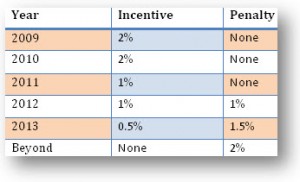 e-prescribing, as clearly explained by CMS, ‘is the ability of the qualified physicians to electronically generate an understandable prescription and send directly or through commercial pharmacy network to a participating pharmacy’. The main reason behind implementation of e-prescription is to reduce medication errors & improve quality of care in the United States.
e-prescribing, as clearly explained by CMS, ‘is the ability of the qualified physicians to electronically generate an understandable prescription and send directly or through commercial pharmacy network to a participating pharmacy’. The main reason behind implementation of e-prescription is to reduce medication errors & improve quality of care in the United States.
Latest research reports on medical errors indicate that every year in the U.S. 1.5 million people are affected and thousands of people die due to ‘medication errors’. The alarming numbers reveal the need to follow a prescribing system that improves the accuracy of prescription. That’s why there is a strong push from the government of the United States to implement e-prescription system.
‘e-prescription implementation – incentive & penalty plan’ put forth by CMS.
CMS encourages physicians to implement the new electronic prescribing system by providing financial incentives if they implement e-prescribing on time and penalizing if they don’t.
Implementing e-prescription:
- Determine your practice requirements to implement e-prescribing
- Educate your patients & your staff, the need for electronic prescription if they resist it.
- Give adequate training to the staff to cope with the changes.
- Keep your vendor aware of the changes so that they are not surprised with an e-prescription from your facility/practice.
- Research and find suitable e-prescribing software that will suit future requirements of ANSI 5010, ICD -10 implementation & most importantly EMR.
Challenges faced while implementing e-prescribing:
- Dependency on system requirements for e-prescribing
- Information security concerns and remote access limitations
- Resistance from patients and staff
While implementing e-prescription, physicians may face many other challenges as well. But e-prescribing provides multiple benefits to physicians that make it worth implementing.
Key Benefits of e-prescribing:
- Legibility of prescription and reduced medical errors
- Compatible for EMR
- Reporting abilities – capability to generate medication report for healthcare analytics
- Time saving and avoids pharmacy call backs
- Cost effective
- Review of medication history that results in enhanced accuracy in prescription
- Alerts – For instance, e-prescribing system alerts physicians for alternative drugs that are more efficient & cost-effective. Warnings – It provides warnings for drug refills so that refills are made quickly
- Greater convenience to physicians and patients
- Improved Patient safety and quality of care
Just adapting an e-prescription alone will not speak success stories. Diligence & routine check up on the functionality of the system, data analysis, closely monitoring patient’s tolerance etc will boost the efficiency there by reducing cost & maximizing your benefits.

